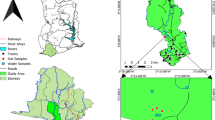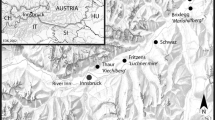Abstract
Mining of copper and other metals to a lesser extent is the mainstay of the Zambian economy. Copper is mined in the Copperbelt situated in the northern part of the country. It is not only the the most thickly populated part of the country but also the most urbanized. Urban centers developed with the mines as their nuclei and hence pose spatial problems between the needs of a rapidly increasing population on the one hand and the requirements of the mining industry on the other. The provision of raw material for the extractive industries is a geological one. Economic history shows the realization of these potentials and thirdly, lack of planning has permitted exploitation of minerals and dumping of wastes without much regard to reclamation. Spoilation of land by mining activity is mainly caused by the methods of mining as well as by the dumping of the solid and liquid wastes from the ore crushers and concentrators; while air pollution from sulphurdioxide and dust is from the smelters. Legislation has recently being enacted to regulate the dumping of wastes and for the reclamation of waste dumps. However, this has had only a minimal effect on the problem as yet. The soil from a dump which is ready for reclamation is analysed and methods of revegetating such a dump based on ecological principles is attempted. Finally, the conflict for land between the needs of a growing urban population and the requirements of the mining industry is discussed taking Kitwe, the capital of the Copperbelt as an example.
Similar content being viewed by others
References
Anon, 1: Zambia's Mining Yearbook. Copper Industry Service Bureau, Kitwe, 1980.
Anon, 2: Mining Dumps Regulations. In: Supplement to the Republic of Zambia, Government Gazette dated the 28th April, 1972, Statutory Instrument No. 99 of 1972. Government Printer, Lusaka, 1972.
Anon, 3: Public Health Act. Laws of Zambia. Part XI, Section 28, Chapter 536. Government Printer, Lusaka, 1964.
Anon, 4: Third National Development Plan (1979–83). Office of the President, National Commission for Development Planning, Lusaka, 1979.
Anon, 5: City of Kitwe, Development Plan. Ministry of Local Government and Housing, Government Printer, Lusaka, 1973.
Armstrong-Smith, G.: Copper Mining and Pollution. Black Lechwe, 2nd Quarter, 18–19 (1972)
Balarman, T.S.: Incidence of Air Pollution in Zambia. In: Pollution and Environment in Zambia. Seminar Report. Lusaka, 44–49, 1971.
Beaver, S.H.: An Appraisal of the Problem. In: Proceedings, Derelict Land Symposium. University of Leeds, 3–9, 1969.
Bowan, R., Gunatillaka, A.: Copper, its Geology and Economics, Applied Science Publishers Ltd. London, 1977.
Charman, J.A.: Aspects of Pollution in the Mining Industry. In: Pollution and Environment in Zambia. Seminar Report, Lusaka, 56–59, 1971.
Collins, W.G., Bush, P.W.: Aerial Photography and Spoiled Lands in Yorkshire. Jour. of the Royal Town Planning Institute, 57, 103–110 (1971)
Cooray, P.G., Lane, A.: A Guide to the Minerals of Zambia, N.C.C.M. and R.C.M. Lusaka, 1978.
Griffiths, Ifuan. I.: Zambian Coal: An Example of Strategic Resource Development. Geog. Rev., LVIII, 536–551 (1968)
Gochin, R.J., Stocks, J., Down, C.G.: The Control of Longterm Environmental Problems for Mineral Production in Developing Countries. In: Proceedings of Conference on Utilization of Mineral Resources in Developing Countries, Lusaka, 1976. Mimeo paper.
Hill, J.R.C.: Establishment of vegetation on copper, gold and nickel mining wastes in Rhodesia. In: Institute of Mining and Metallurgy Transactions, Section A, 86, 135–145 (1977)
James, A.D.: Stabilizing Mine Dumps with Vegetation. Endeavour, 25, 154–157 (1966)
Jayaraman, C.K.: Spatial Patterns of Urbanization and Urban Development in African Countries, A Case Study of Zambia. Ph. D. dissertation, Department of Geography, University of Warsaw 1978.
Radetzi, Marian: Metal Mineral Resource Exhaustion and the Threat to Material Progress. The Case of Copper. World Development, 3, 123–136 (1975)
Reilly, C., Stone, J.: Copper tolerance in Becium homblei. Nature, 230, 403 (1971)
Ross, W. Gilles: Encroachment of the Jeffrey Mine on the Town of Asbestos, Quebec. Geog. Rev. 37, 523–537 (1967)
Author information
Authors and Affiliations
Rights and permissions
About this article
Cite this article
Perera, N.P. Mining and spoiled land in Zambia: An example of conflicting land use in the third world. GeoJournal 2 (Suppl 2), 95–103 (1981). https://doi.org/10.1007/BF00196328
Issue Date:
DOI: https://doi.org/10.1007/BF00196328




